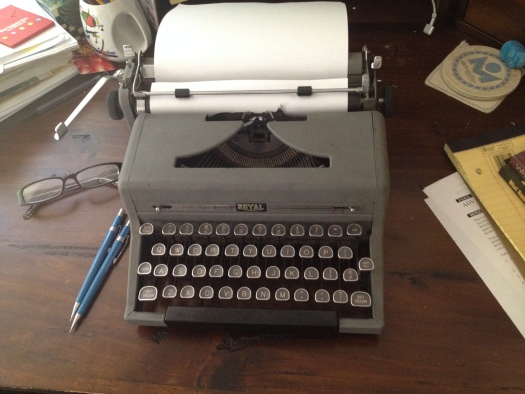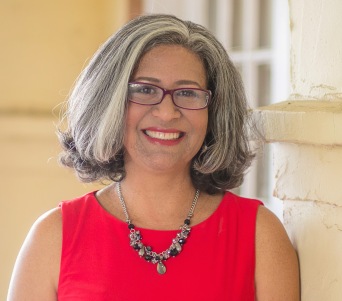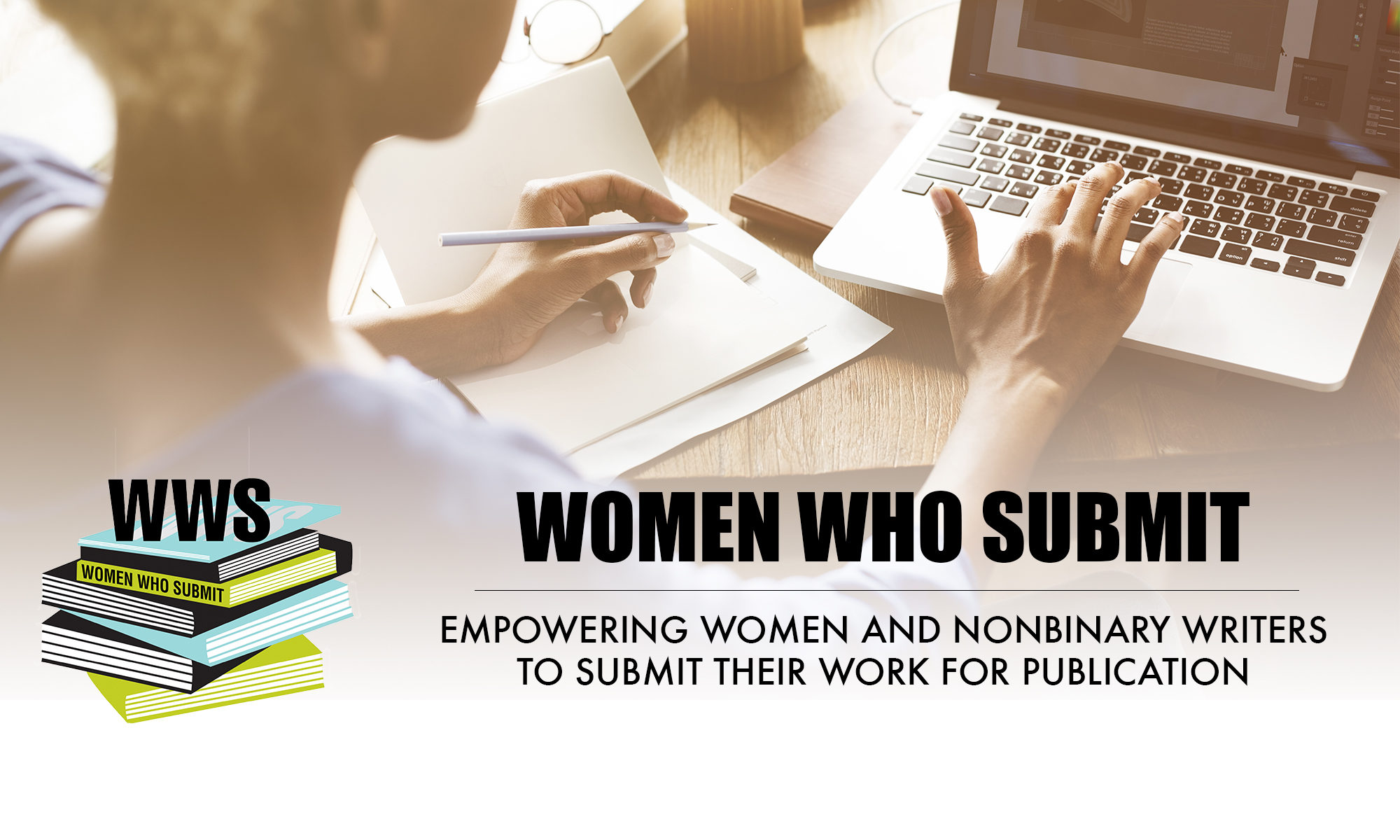For those planning to attend AWP 2016 this week in Los Angeles, we do not doubt slogging through the list of scheduled events and managing the deluge of invites is making you short of breath. To help, we’ve created a cheat sheet of panels, readings, awards ceremonies, and cocktail parties where you can find the bright, shining women of Women Who Submit. And if our list doesn’t have a calming effect, there is always Lauren Eggert-Crowe’s piece, “How to Do AWP,” posted last week on the blog, for tips on self-care and success while getting your conference on.
So take a breath and dive in to the many wonders and amazements we have in store for you, and be sure to stop by booth #1504 to say hello and catch a glimpse of “The Amazing Submitting Woman.”
Monday March 28, 2016
The Instant. at 8pm (Not technically AWP, but a good warm up because… soup)
Ham & Eggs Tavern: 433 W 8th St, Los Angeles, California 90014
A monthly reading series that serves up local and visiting literary contributors, unique live music/performance and everyone’s favorite go-to food in a cup, Instant Ramen. Featuring Vickie Vertiz, Jervey Tervalon, Jade Chang, Jesse Bliss, & Toni Ann Johnson.
Wednesday March 30, 2016
Hello Los Angeles: An AWP Kickoff Party at 4pm-6pm
barcito: 403 W 12th St, Los Angeles, California 90015
An L.A. literary cocktail party benefitting 826LA with Special Guests Luis Alberto Urrea, Michael White, Robin Black, Desiree Cooper, Fabienne Josaphat, Bethanne Patrick, Xochitl-Julisa Bermejo, Teka Lark and Dan Smetanka.
AWP Offsite: Coiled Serpent Publication Reading with Luis Rodriguez at 6pm-11pm
Ace Hotel Downtown Los Angeles: 929 S Broadway, Los Angeles, California 90015
Beyond Baroque Books and Tia Chucha Press present a publication reading for Coiled Serpent: Poets arising from the cultural quakes and shifts of Los Angeles edited by Luis J Rodriguez, Neelanjana Banerjee, Daniel A. Olivas, and Ruben J. Rodriguez. Featured readers include Don Campbell, Marisa Urrutia Gedney, Yago S. Cura, Jessica Ceballos, traci kato-kiriyama, William Archila, Sophie Rivera, Trini Rodriguez, Terry Wolverton, Xochitl-Julisa Bermejo and more!
Shipwreck Presents: The Adventures of Sherlock Holmes, a Literary Erotic Fanfiction Competition at 7pm
Bootleg Theater: 2220 Beverly Blvd, Los Angeles, California 90057
Shipwreck, the San Francisco-based literary erotic fanfiction competition, is coming to LA for the first time, and we’re taking on Sherlock—yep, the whole f*cking canon with featured writers: Carmiel Banasky, Nina Bargiel, Lauren Eggert-Crowe, Nate Waggonner, Zoë Ruiz, and Matt Young.
AWP16 Offsite Event: “IX LIVES” Launch Hosted by Exposition Review at 7pm
Hennessey + Ingalls Bookstore: 300 S Santa Fe Ave, Ste M, Los Angeles, California 90013
Come kick off #AWP16 with the editors of Exposition Review as we celebrate the launch of our new volume “IX Lives”!
Thursday March 31, 2016
From the Drudges: Sustaining a Writing Life from Outside of Academia at 12pm-1:15pm
LA Convention Center, Room 408 A, Meeting Room Level
The lion’s share of prizes, grants, fellowships, and accolades originates in academia and is awarded to academics. Does this mean we have to teach in order to sustain a writing life? Five panelists discuss how a meaningful and successful writing career can be established and sustained from outside of the university cycle. Moderated by Jen Fitzgerald with panelists Rodrigo Toscano, Alyss Dixson, and Ashaki M. Jackson.
From New Wave to Punk: Musical Influences on Latino Literary Aesthetics at 1:30 pm to 2:45 pm
Room 505, LA Convention Center, Meeting Room Level
From all corners of Los Angeles and across this country, punk and New Wave music have influenced Latino writers for decades. This multigenre panel is equal parts reading, discussion, and listening party with special guest Michelle Gonzales author of The SpitBoy Rules, Daniel Chacon, Carribean Fragoza, musicologist Marlen Rios, and Vickie Vertiz.
Mistaking Planes for Stars: Writing from Los Angeles Flight Paths and Freeways at 3pm-4:15pm
AWP Conference, Room 410, LA Convention Center, Meeting Room Level
Working-class writing in Los Angeles has a long-standing tradition, from Bukowski to Viramontes. This read-ing highlights cutting-edge poetry, story, and performance by working-class and queer Latinos from southeast Los Angeles with with Steve Gutierrez, Melinda Palacio, Aida Salazar, and Vickie Vertiz.
Does America Still Dream? Depictions of Class, Poverty, and Social Im/mobility in Literature at 3pm-4:15pm
Rm 503, L.A. Convention Center, Meeting Room Level
Authors writing across genre and form hold an interracial conversation about rendering American class and poverty on the page. Moderated by LA-based writer and educator Dawn Dorland, featuring Jodi Angel, Teka-Lark Fleming, Jaquira Díaz & Melissa Chadburn.
Never on Your Own: Creating Community When Writing Is Done at 4:30pm-5:45pm
Gold Salon 1, JW Marriott LA, 1st Floor
Members of Booklift, Los Norteños, Seattle 7 Writers, the Shipping Group, and Women Who Submit—groups that focus on promotion, networking, and sending work out—share strategies on how to start and run such a group, how to partner with local bookstores and writing centers, and how to foster community both online and offline. Moderated by Waverly Fitzgerald with panelists Kathleen Alcalá, Xochitl-Julisa Bermejo, Josephine Ensign, and Kelli Russell Agodon.
Incarcerated Juvenile? Veteran? Senior? Teaching and Reaching the Writer Hidden Within the Underserved at 4:30pm-5:45pm
Diamond Salon 6&7, JW Marriott LA, 3rd Floor
Five veteran teachers of the underserved discuss strategies and best practices to bring the power of writing into the lives of those often discounted in our culture. Panelists discuss the challenges and rewards of working in unusual classrooms and delve into how to best engage unique populations. Moderated by Monona Wali with panelists Robert Fox, Esché Jackson, Ashaki M. Jackson and Leslie Diane Poston.
La Pachanga 2016! at 5:30pm-8:30pm
Avenue 50 Studio: 131 N Avenue 50, Los Angeles, California 90042
An award ceremony & celebration honoring Francisco X. Alarcón, RIP, Juan Felipe Herrera, Lucha Corpi, Luis Javier Rodríguez, Odilia Galván Rodríguez as well as celebrating the release of the new anthology Poetry of Resistance: Voices for Social Justice (University of Arizona Press).
The Lulus at 5:30pm-7:30pm
The Palm Restaurant: 1100 S Flower St, Los Angeles, CA 90015
Lulu will present its first annual awards, the Lulus, in recognition of writers and organizations who actively support racial, gender and class justice. Honorees include Garth Greenwell, Saeed Jones, and Wendy C. Ortiz.
$10 per ticket
Word of Mouth offsite reading AWP 2016 at 6pm
Casey’s Irish Pub: 613 S Grand Ave, Los Angeles, California 90017
Featuring David James Poissant, Tammy Delatorre, Tom Hunley Ron Salutsky, Leona Sevick, Tania Runyan, Susan Browne, Scott T. Starbuck, Martha Silano, Dave Essinger, CC Perry, Cindy Rinne, Brendan Kiely, and Tom Bligh.
Best of the West Reading at Villains Tavern at 6pm
Villains Tavern: 1356 Palmetto St, Los Angeles, California 90013
Join The Los Angeles Review, Pacifica Literary Review, and CutBank for a Best of the West Reading at Villains Tavern in the LA Arts District featuring Siel Ju, Madgalawit Makonnen, Jeff Walt, William Camponovo, Corinne Manning, Catherine Pond, Daniel Riddle Rodriguez, and Caleb Tankersley.
Best of the Net / Political Punch / Sundress / Agape Reading at 7pm-10pm
The Lexington: 129 E 3rd St, Los Angeles, California 90013
Join Sundress Publications for a night of three celebratory readings for our new poetry anthology, Political Punch, the 10 year anniversary of the Best of the Net Anthology, and Sundress’s Sweet 16 with readings by Timothy Liu, Cam Awkward-Rich, Xochitl-Julisa Bermejo, Hanif Willis-Abdurraqib, Lee Ann Roripaugh, Chen Chen, Traci Brimhall, Matt Hart, Emily Jungmin Yoon, Alix Olin, Nicole Walker, Sarah Einstein, Fox Frazier-Foley, Amorak Huey, Letitia Trent, Jill Khoury, Saba Syed Razvi, Jessica Rae Bergamino, and M. Mack!
Friday April 1, 2016
The Flash Sequence: A Reading and Discussion at 9am-10:15am
LA Convention Center, Room 406 AB, LA Convention Center, Meeting Room Level
For 20 years, the Marie Alexander Series has published hybrid work: prose poems, flash fiction, lyric essays, and books that mix all three and defy categorization. For our 20th anniversary, we decided to publish an anthology of flash sequences—that is, pieces comprising short prose segments.Each participant will read and discuss his or her contribution to the anthology. Moderator, Debra Marquart with panelists, Irena Praitis, Siel Ju, Jenn Koiter, and Sonia Greenfield.
Through the Closet: Writing Human Complexity in Queer Characters at 10:30am
Los Angeles Convention Center, Room 404 AB, Meeting Room Level
The typical “coming out of the closet” narrative is a fantasy of a starkly contrasted before-and-after, of complete disclosure and consequence. Through the lens of their works of fiction, the panelists discuss the limitations of this oversimplified account of the queer experience and explore their varying approaches in writing queer characters in all of their human nuances and differences across genres and time periods. Moderator, Catie Disabato with panelists Thomas McBee, Marcos L. Martinez, Seth Fischer, and Kate Maruyama.
“Once, I Was That Girl”: Creative Writing Pedagogy for Tween and Teen Girls. at 10:30am
LA Convention Center, Room 505, Meeting Room Level
“Empowering girls” has become a catchphrase that can be relatively meaningless. Yet, single-sex environments have been proven to be productive spaces in which creativity is nurtured and young writers can grow. Four educators and writers who have founded organizations that serve tween and teen girls speak to the practical challenges and the reverberations of success they have witnessed while mentoring girls, as well as the inspiration this has brought to their own creative work. With panelists Elline Lipkin, Allison Deegan, Nancy Gruver, Margaret Stohl, and Marlys West.
Book signing of The Amado Women by Désirée Zamorano at 2pm-3pm
Bindercon table, exhibit space #1936
¡Chicana! Power! A Firme Tejana-Califas Reading at 3pm-4:15pm
LA Convention Center, Room 410, Meeting Room Level
With a brown fist in the air, chanting “¡Sí Se Puede!” these mujeres bring la palabra. This is a reading by fierce Chicana poets stemming from Texas and Califas. Moderated by Dr. Guadalupe Garcia Montano with panelists Xochitl-Julisa Bermejo, Anel I. Flores, Emmy Pérez, and Laurie Ann Guerrero.
Poetas in ONE-derland (An AWP offsite reading) at 7pm
Self Help Graphics & Art: 1300 E 1st St, Los Angeles, California 90033
A Poetry evening featuring eastside and east coast sisters of the
historical Nuyorican Poets Cafe featuring Cynthia Guardado, Ashaki M. Jackson, reina alejandra prado saldivar, Peggy Robles-Alvarado, Maria Rodriguez-Morales, and Vickie Vértiz.
AWP 2016 Offsite: The Rumpus and Rare Bird Present PICK YOUR POISON at 7pm-9pm
Lethal Amounts: 1226 W 7th St, Los Angeles, California 90017
The Rumpus and Rare Bird proudly present PICK YOUR POISON, an AWP 2016 offsite event. With readings from Cornelius Eady, Rich Ferguson, Ashley C. Ford, Erika Krouse, Anna March, and J. Ryan Stradal! Hosted by Antonia Crane!
AWP Offsite: Kundiman & Kaya Present LITERAOKE at 8:30pm-11pm
Kapistahan: 1925 W Temple St, Ste 103, Los Angeles, California 90026
Come out and get down with Kaya Press & Kundiman at our AWP offsite event as we combine readings and Karaoke into a never-before-attempted experiment of entertainment and enlightenment! Features include Vidhu Aggarwal, Xochitl-Julisa Bermejo, Sam Chanse, Leticia Hernandez, Ashaki M. Jackson, Janine Joseph, Teka Lark, Sueyeun Juliette Lee, Ed Lin, R. Zamora Linmark, Kenji Liu, Rajiv Mohabir, Angela Peñarendondo, and more!
VIDA Dance-a-Thon at AWP at 10pm-2am
Ace Hotel Los Angeles: 929 S Broadway, Los Angeles, California 90015
Don’t worry, it’s not a competition, we just want to have a good time! Come party with VIDA at our AWP offsite event, and support another year of amplifying women’s voices with features Charlie Jane Anders, Sheila Black, Wendy C. Ortiz, Gregory Pardlo, Christopher Soto (aka Loma), Michelle Tea.
Saturday April 2, 2016
The 3rd Annual Rock and Roll Reading at 4 PM – 7:30 PM
The Echoplex: 1822 W Sunset Blvd, Los Angeles, California 90026
Rapid-fire readings followed by live music from Frances Gumm featuring Alice Bolin, Stephen Burt, Melissa Chadburn, Jerry Gabriell, Eleanor Henderson, Micah Ling, Nate Marshall, Adrian Matejka, Emily Nemens, Elena Passarello, Jim Ruland, Ethan Rutherford, Amy Scharmann, Amy Silverberg.
AWP: Thanks for Visiting! at 6pm-8pm
Espacio 1839: 1839 E 1st St, Los Angeles, California 90033
Los Angeles Poet Society and The Writers Underground present a showcase of Los Angeles Poets that bring it! With: Iris De Anda, Jessica M. Wilson, Jeffery Martin, Gloria E. Alvarez with Musical accompaniment from Greg Hernandez, Steve Abee, and Cynthia Guardado.
FLORICANTOS UNCOILED: Afterdark Whispers of Passion at 10pm-1:30am
Medford Street Studios: Los Angeles, California 90033
An late night reading co-hosted by Las Lunas Locas with Karineh Mahdessian and Sophia Rivera celebrating POETRY OF RESISTANCE: VOICES FOR SOCIAL JUSTICE, published by the University of Arizona press and co-edited by Francisco X. Alarcón (RIP: Rest in Poetry) and Odilia Galván Rodríguez and COILED SERPENT: POETS ARISING FROM THE CULTURAL QUAKES & SHIFTS OF LOS ANGELES, published by Tia Chucha Press.
For those not attending AWP 2016 or looking to take a break from the Los Angeles Convention Center, be sure to attend a panel or two at THE REJECTED, an alternative mini-convention brought to you by Lauren Traetto, Writ Large Press, and CIELO featuring panels and speakers rejected by “stupid ass AWP16 for no damn good reason.”
 By Lisbeth Coiman
By Lisbeth Coiman Lisbeth Coiman is a bilingual writer standing (unbalanced) on a blurred line between fiction and memoir. She has wandered the immigration path from Venezuela to Canada, to the US, and now lives in Oakland. Her upcoming memoir The Shattered Mirror celebrates friendship among women and draws attention on child abuse and mental illness. She also writes short fiction and poetry, and blogs “irregularly” at www.gingerbreadwoman.org
Lisbeth Coiman is a bilingual writer standing (unbalanced) on a blurred line between fiction and memoir. She has wandered the immigration path from Venezuela to Canada, to the US, and now lives in Oakland. Her upcoming memoir The Shattered Mirror celebrates friendship among women and draws attention on child abuse and mental illness. She also writes short fiction and poetry, and blogs “irregularly” at www.gingerbreadwoman.org



 Lauren Eggert-Crowe is the author of three poetry chapbooks: In The Songbird Laboratory, The Exhibit, and Rungs, collaboratively written with Margaret Bashaar. She has written essays, book reviews, interviews, and cultural reportage for Salon, The Rumpus, The Millions, The Nervous Breakdown, Midnight Breakfast, and L.A. Review of Books. Her poetry appears in Tupelo Quarterly, SpringGun, Sixth Finch, Interrupture, Terrain.org and DIAGRAM, among others. She has an MFA in poetry from the University of Arizona.
Lauren Eggert-Crowe is the author of three poetry chapbooks: In The Songbird Laboratory, The Exhibit, and Rungs, collaboratively written with Margaret Bashaar. She has written essays, book reviews, interviews, and cultural reportage for Salon, The Rumpus, The Millions, The Nervous Breakdown, Midnight Breakfast, and L.A. Review of Books. Her poetry appears in Tupelo Quarterly, SpringGun, Sixth Finch, Interrupture, Terrain.org and DIAGRAM, among others. She has an MFA in poetry from the University of Arizona.


 I’m giving myself ten years to focus my efforts on “Books & Babies.” I even created one of my elaborate vision boards filled with cut-outs from Poets and Writers and parenting magazines evoking the parent/writer life.
I’m giving myself ten years to focus my efforts on “Books & Babies.” I even created one of my elaborate vision boards filled with cut-outs from Poets and Writers and parenting magazines evoking the parent/writer life. Li Yun Alvarado is the author of
Li Yun Alvarado is the author of 




